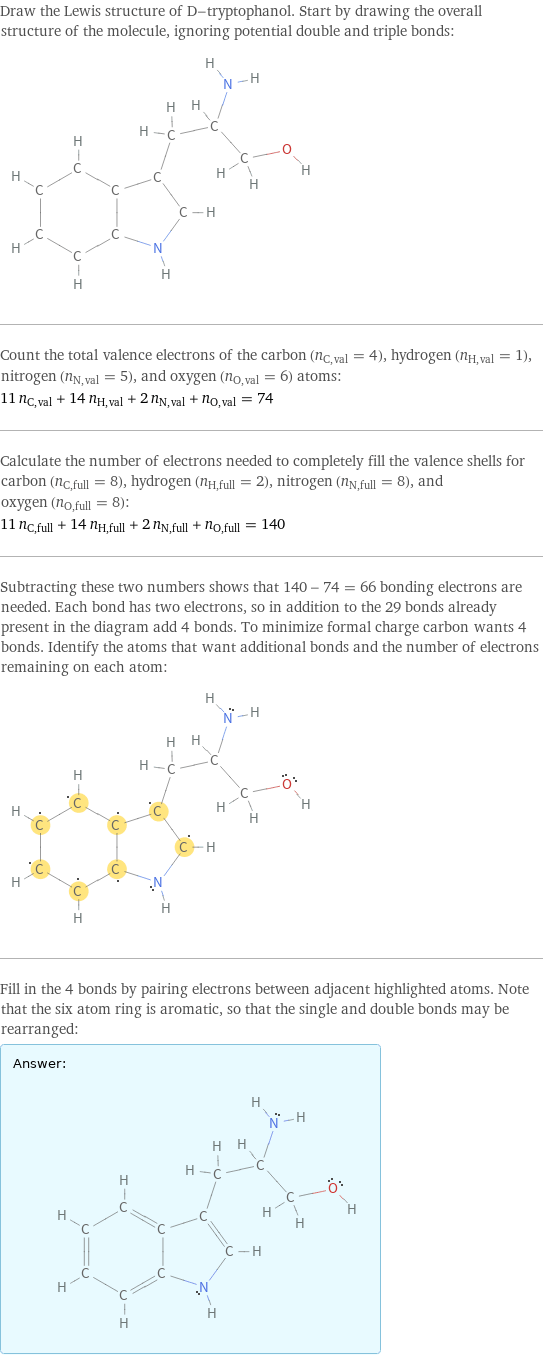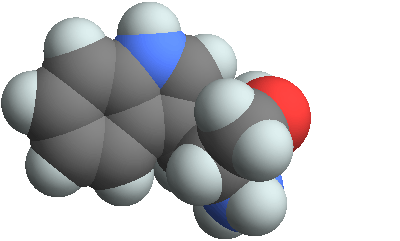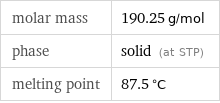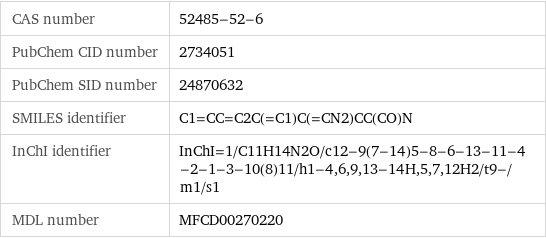Input interpretation

D-tryptophanol
Chemical names and formulas

formula | C_11H_14N_2O name | D-tryptophanol IUPAC name | (2R)-2-amino-3-(1H-indol-3-yl)propan-1-ol alternate names | (2R)-2-amino-3-(1H-indol-3-yl)propan-1-ol mass fractions | C (carbon) 69.4% | H (hydrogen) 7.42% | N (nitrogen) 14.7% | O (oxygen) 8.41%
Lewis structure

Draw the Lewis structure of D-tryptophanol. Start by drawing the overall structure of the molecule, ignoring potential double and triple bonds: Count the total valence electrons of the carbon (n_C, val = 4), hydrogen (n_H, val = 1), nitrogen (n_N, val = 5), and oxygen (n_O, val = 6) atoms: 11 n_C, val + 14 n_H, val + 2 n_N, val + n_O, val = 74 Calculate the number of electrons needed to completely fill the valence shells for carbon (n_C, full = 8), hydrogen (n_H, full = 2), nitrogen (n_N, full = 8), and oxygen (n_O, full = 8): 11 n_C, full + 14 n_H, full + 2 n_N, full + n_O, full = 140 Subtracting these two numbers shows that 140 - 74 = 66 bonding electrons are needed. Each bond has two electrons, so in addition to the 29 bonds already present in the diagram add 4 bonds. To minimize formal charge carbon wants 4 bonds. Identify the atoms that want additional bonds and the number of electrons remaining on each atom: Fill in the 4 bonds by pairing electrons between adjacent highlighted atoms. Note that the six atom ring is aromatic, so that the single and double bonds may be rearranged: Answer: | |
3D structure

3D structure
Basic properties

molar mass | 190.25 g/mol phase | solid (at STP) melting point | 87.5 °C
Units

Chemical identifiers

CAS number | 52485-52-6 PubChem CID number | 2734051 PubChem SID number | 24870632 SMILES identifier | C1=CC=C2C(=C1)C(=CN2)CC(CO)N InChI identifier | InChI=1/C11H14N2O/c12-9(7-14)5-8-6-13-11-4-2-1-3-10(8)11/h1-4, 6, 9, 13-14H, 5, 7, 12H2/t9-/m1/s1 MDL number | MFCD00270220